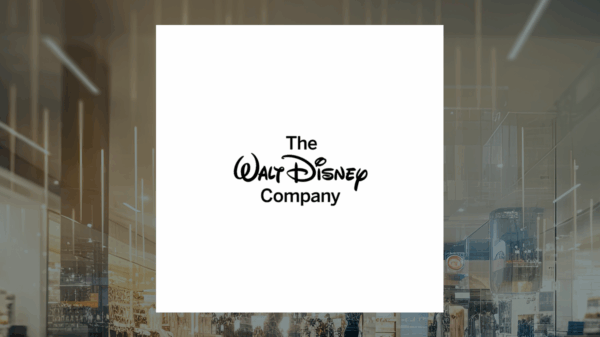Mid-cap technology stocks have demonstrated significant resilience and performance over the past three years, particularly in the software and services sectors. The S&P MidCap 400 Information Technology sector reported approximately 22% annualized gains since 2022, reflecting a marked recovery following the bear market. This rebound is attributed to stabilizing interest rates and a resurgence in earnings growth.
The SPDR S&P Software & Services ETF (XSW), which specifically excludes hardware and leans towards small to mid-cap companies, showcased slightly lower annualized returns of 19.8% through June 30, 2025. In contrast, cloud-focused companies lagged with the WisdomTree Cloud Computing (WCLD) index delivering an annualized growth rate of about 9% during the same period. This disparity highlights the market’s preference for established, profitable software firms over those that are heavily reliant on consumer spending.
Key Factors Driving Performance
Two main structural factors have influenced this performance landscape. Firstly, the market has shifted its focus from purely revenue-driven growth to a more disciplined approach that emphasizes profitability and sustainable margins. As capital costs remain high, companies with strong gross margins and visible cash flow have maintained their market valuations, while those with high cash burn have seen their values decline.
Secondly, the integration of artificial intelligence (AI) into business workflows has favored companies that embed AI solutions in practical applications, such as security and data management. Budget-conscious enterprises prioritize AI capabilities that enhance operational efficiency rather than speculative investments. This trend aligns with insights from Deloitte, which anticipates increased IT spending linked to AI integrations rather than new, untested investments.
Defining the mid-cap category is essential; companies with market values between $2 billion and $10 billion are typically beyond the initial product-market fit stage, enabling them to leverage growth without excessive dilution. This size allows them to invest in research and development while capturing market share, especially during economic upswings.
Top Mid-Cap Tech Stocks
The performance of mid-cap tech stocks over the past three years has varied significantly by business model, with the top performers illustrating diverse strategies. Here are the leading companies based on their compound annual growth rates (CAGR):
10. Formula Systems (1985) Ltd. (NASDAQ:FORTY)
Market Cap: $2.20 billion
3-Year CAGR: 22.18%
Formula Systems has seen steady growth, recently announcing a significant acquisition by Advent International of its insurance-software subsidiary. The company reported record revenues of $743.4 million in Q2 2025, underscoring the robust demand for its software services.
9. Parsons Corporation (NYSE:PSN)
Market Cap: $9.37 billion
3-Year CAGR: 28.33%
Parsons recently acquired Applied Sciences Consulting, enhancing its capabilities in water management solutions. This deal is part of Parsons’ strategic focus on resilience and infrastructure, aligning with federal investments in climate-resilient projects.
8. Varonis Systems, Inc. (NASDAQ:VRNS)
Market Cap: $6.72 billion
3-Year CAGR: 28.95%
Varonis has benefited from steady SaaS adoption and AI integrations, with UBS recently raising its price target based on strong demand for its cloud-native platform. Key acquisitions have expanded its role in enterprise data security.
7. Aurora Innovation, Inc. (NASDAQ:AUR)
Market Cap: $9.96 billion
3-Year CAGR: 30.3%
Aurora focuses on autonomous driving solutions for trucking, with analysts maintaining positive ratings and price targets that suggest potential for significant upside.
6. Zeta Global Holdings Corp (NYSE:ZETA)
Market Cap: $4.75 billion
3-Year CAGR: 39.51%
Zeta’s growth is bolstered by its AI-driven marketing cloud, and its planned acquisition of Marigold is expected to enhance its revenue and EBITDA significantly.
5. Kyndryl Holdings, Inc. (NYSE:KD)
Market Cap: $6.91 billion
3-Year CAGR: 49.97%
Kyndryl is positioning itself within the AI landscape, launching new solutions aimed at modernizing operations in various sectors, including aviation.
4. AvePoint, Inc. (NASDAQ:AVPT)
Market Cap: $3.20 billion
3-Year CAGR: 58.03%
AvePoint’s SaaS offerings have seen robust growth, with strong quarterly revenues and expanding capabilities in cloud data protection.
3. BigBear.ai Holdings, Inc. (NYSE:BBAI)
Market Cap: $2.76 billion
3-Year CAGR: 70.90%
BigBear.ai has garnered attention for its AI applications in defense and logistics, recently announcing a collaboration to enhance maritime awareness for the U.S. Navy.
2. Applied Digital Corporation (NASDAQ:APLD)
Market Cap: $7.48 billion
3-Year CAGR: 156.32%
Applied Digital is at the forefront of next-generation digital infrastructure, with significant leases expected to generate substantial revenue.
1. Innodata Inc. (NASDAQ:INOD)
Market Cap: $2.79 billion
3-Year CAGR: 197.70%
Innodata has recently seen analysts reaffirming their positive outlook, positioning itself as a key player in the AI ecosystem.
In conclusion, the mid-cap software and services sector has achieved impressive annualized returns over the last three years, with a variety of business strategies contributing to their success. As market dynamics continue to evolve, companies demonstrating strong cash flow, disciplined operations, and innovative AI solutions are likely to maintain their competitive edge. Investors are encouraged to focus on the fundamentals that drive value creation in this competitive landscape.


































































